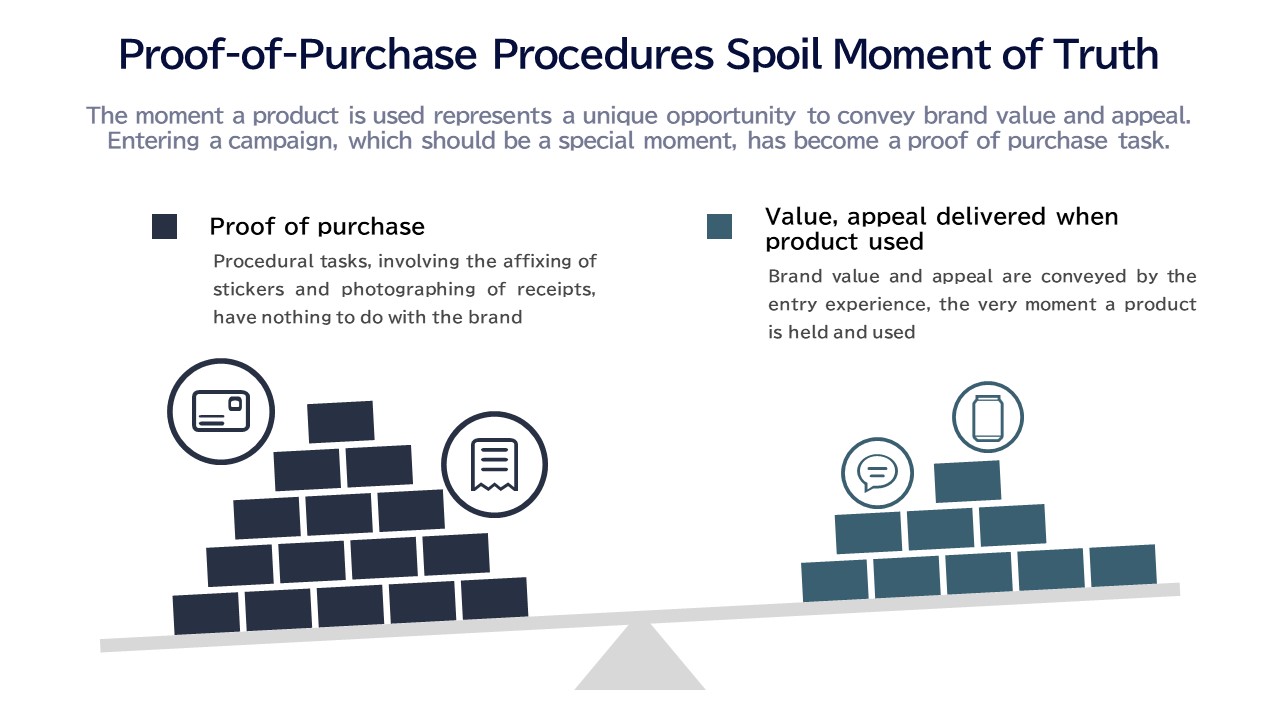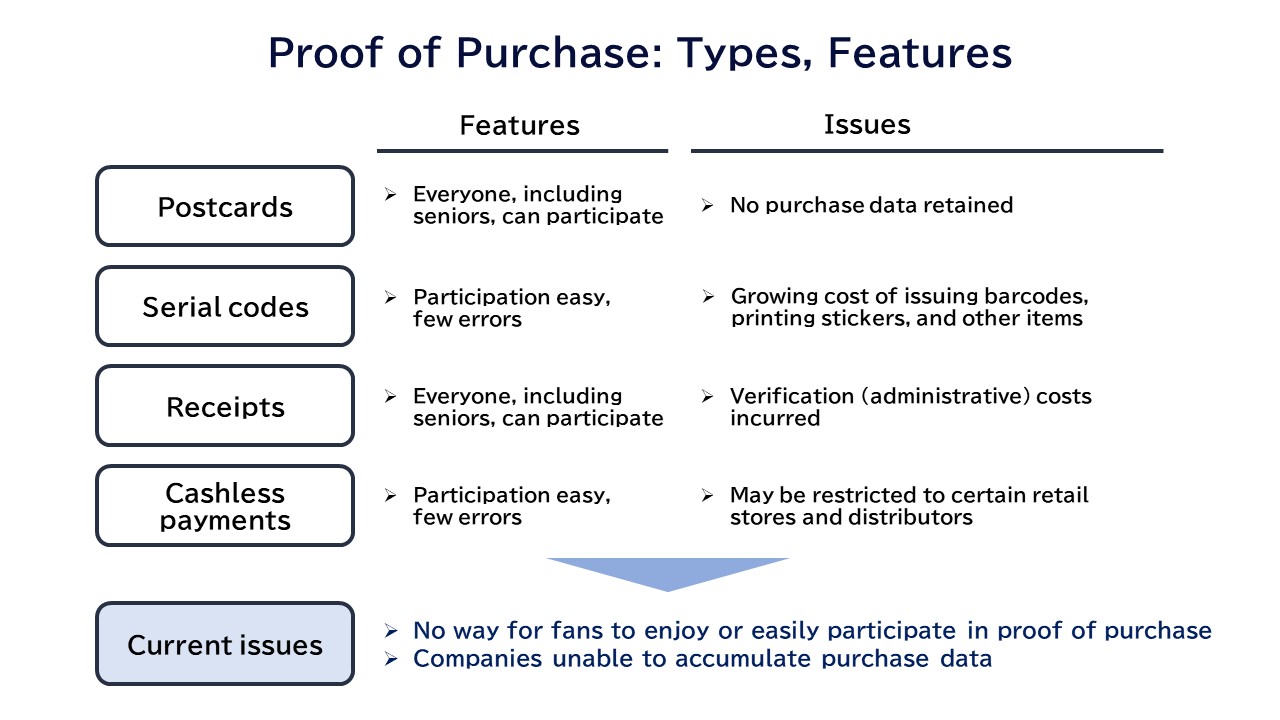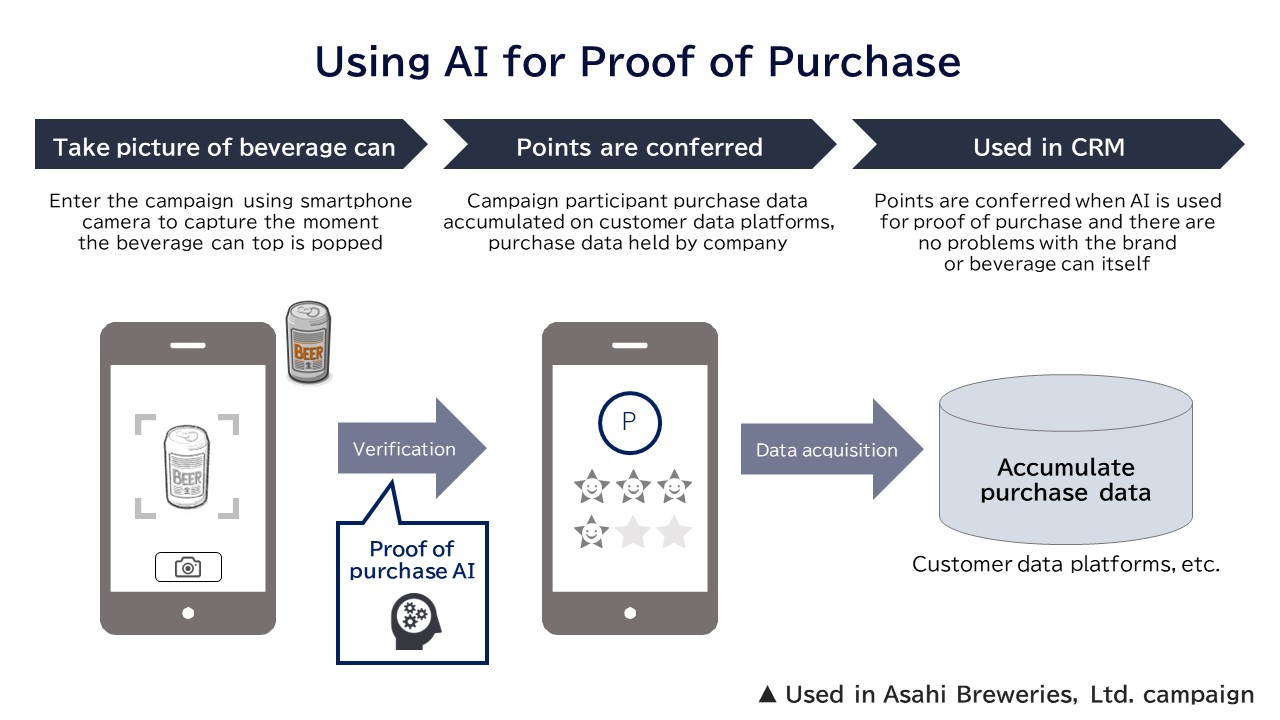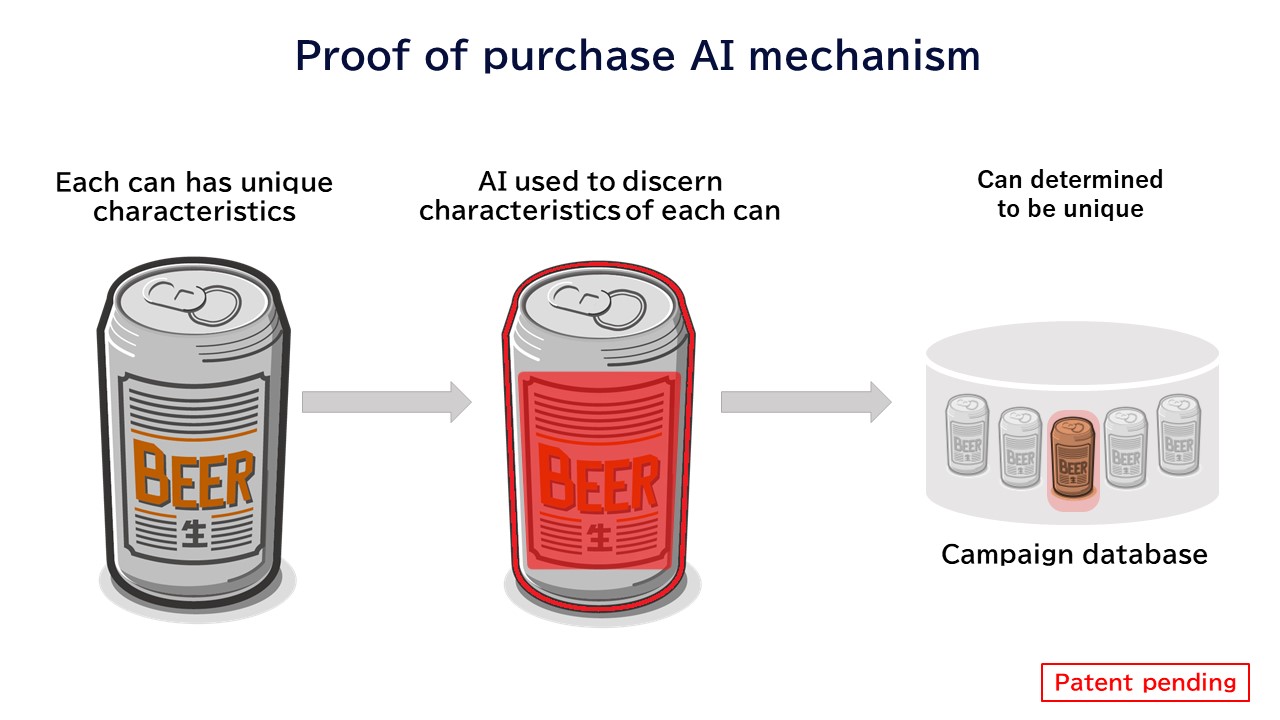

In this section, some DX initiatives are introduced that are used in sales promotions to resolve issues such as proof of purchase. This is done from three perspectives: that of a sales promotion director, namely, Junpei Takahashi; a data analyst, Shinichiro Hirakawa; and a data scientist, Hatsumi Suzuki.
DX needed to promote sales, solve issues

Junpei Takahashi
Manager
Digital Promotion Division
DENTSU PROMOTION PLUS INC.
Up to now, I have been in charge of planning and support for numerous sales campaigns for fast-moving consumer goods (FMCG). Based on my experience, I here discuss both some of the challenges that promotions face and new outcomes demanded of DX.
Campaigns in which customers purchase products to receive gifts give clients important opportunities to generate direct sales, as well as create new connections with customers. A campaign might proclaim: “Buy XX and receive a gift!” or “Buy product X to be entered in the drawing!”
Data obtained from customers who purchase products is extremely important for the development of subsequent measures, including up-selling, cross-selling, and improving lifetime value through ongoing CRM.
However, clients who do not have a direct primary point of contact and sell products to consumers through distributors—as is the case with many FMCG—must obtain critical purchase data directly in real time. Doing so is not easy and is a major issue facing sales promotion DX.

Sales promotion effect for new era and generation
Conventional campaigns have been expected to boost sales, but my sense is that an increasing number of clients need new links to customers that go beyond this objective.
For example, consumers have long entered campaigns by collecting stickers on mail-in postcards or uploading images of receipts to campaign entry websites as proof of their purchase. Although widespread, these offline proof of purchase methods tend to favor older consumers more accustomed to offline methods.
Clients who make a great effort to differentiate their products from those of the competition, and who carefully build their company brand, find that sales campaigns are critical for creating fans. Thus, after purchasing a product, customers are given a gift, which enables them to use the product and experience its value. This is a moment of truth in terms of creating brand fans.
If the brand is a beverage, for example, imagine the consumer entering the campaign while holding the product in one hand and a smartphone in the other. The moment the consumer actually takes a sip of the product, enjoys its taste, and savors the refreshing sensation it provides, is an opportunity to convey brand value and appeal in a realistic and compelling way.
Thus, if the entry experience is reduced to the need for proof of purchase, requiring that stickers be affixed to a postcard or receipts be photographed, the moment is not merely lost—it is ruined.

With challenges remaining in terms of sales promotion DX, we realized we needed to try something unprecedented for a new era and a younger cohort, including Generation Z. Shinichiro Hirakawa, our data analyst, will now discuss challenges we addressed.
Sales Promotion Campaign Trends and Issues

Shinichiro Hirakawa
Data Analyst,
Data Technology Center,
Dentsu Inc.
Drawing on my experience as a data analyst, I will explain the sales promotion campaign trends and DX efforts involved in sales promotions.
As Takahashi mentions above, current sales promotion campaigns involve several issues. Recently, there has also been a focus on cashless payments, whereby users can obtain proof of purchase simply by making a purchase using the same XX Pay cashless payment app they generally use. Proof of purchase by cashless payment has been shown to bring in a large number of new customers, and is expected to retain them.

The chart above summarizes characteristics and issues surrounding current proof-of-purchase methods. Some manufacturers have indicated that there are brands which prefer to use their own proof-of-purchase mechanism, after obtaining consent from end-user customers.
Based on our information in connection with sales promotion campaigns, we identified issues pertaining to proof-of-purchase mechanisms, data capitalization, and customer experience.

AI Used for Proof of Purchase
Discussions were held among clients and advertising company teams regarding new ways of bringing an element of surprise to the procedures involved in digital sales promotion proof of purchase. The conclusion drawn was that the moment of truth for fans is when they are most excited just before using a product. An example might be just before someone opens a beverage can.
If fans are able to participate in campaigns using a smartphone camera, the moment of truth becomes more meaningful. To this end, it is essential that the system award points when, after eliminating obvious fraud, camera images are verified in real time as proof of purchase.
Further, in this cookie-free era, directly linking campaign participant purchase data to customer data platforms and gathering purchase data in-house have been a challenge. As one way of resolving these issues, we developed the use of AI to prove a purchase had been made.

Next, Hatsumi Suzuki, the data scientist who actually developed the AI-based purchase verification system, will discuss the mechanism and how he devised its implementation.
Developing a Verification System Using AI

Hatsumi Suzuki
Department Director
AI Solution Division
Dentsu Digital Inc.
Against a background of supporting the use of AI and having taught courses on AI learning and other topics, I will outline the AI mechanism for purchase verification.
Rather than collecting stickers from cans, the system provides an experience: use of a smartphone with an AI camera to verify cans and accumulate points.
We faced two challenges regarding the collection of points. First, we had to determine that the product was correct. Second, we had to verify that this was a unique can of the correct product.
In sticker campaigns, one sticker is affixed to each applicable product, resolving both of the above issues. When using AI to verify an object, the first issue is resolved, since the system can detect applicable products with over 99% accuracy.
Yet, since there are generally no distinguishable numbers or other unique identifiers on individual beverage cans, they theoretically could be used over and over, making it difficult to resolve the second issue—that it is a unique can of the correct product. In fact, it is the workaround for this issue that is the core of the system.
As we searched for answers during the development process, we discovered that each can has its own unique characteristics, there being variations resulting from the manufacturing process.
The system we used employs AI to identify information visible on the outside of cans, including shape and printed patterns, to determine whether the can is unique. As there are no public data sets or other information on training data for beverage cans, the system (patent pending) was created as original data for the project.

That said, all cans are not unique, and it is possible that two cans will yield identical results. However, we examined this point and confirmed that the same results were not obtained, no matter how many cans were lined up. Fraud alerts were only issued when a series of cans all yielded the same results.
AI in Future Sales Promotions
Hirakawa: Hearing this discussion from your perspective as a long-time sales promotion specialist, how do you think this initiative will impact future sales promotions?
Takahashi: I believe that this initiative has transformed the way consumers will participate in campaigns. Their role has evolved from verifying proof of purchase to having a completely new experience. The product is captured, by a smartphone, in the moment it is being enjoyed.
As a matter of fact, I also feel excitement when I pop the top of a beverage can and hear the fizz. So, from the perspective of a consumer, it is convenient to use the can itself to participate in a campaign, rather than collect stickers or scan receipts. The new way also will make consumers feel closer to products.
I believe that, in future, further value will derive from the ability to obtain data about when a product is consumed, something that is impossible to do using conventional proof of purchase methods. What are your views on data and AI?
Suzuki: As you point out, the ability to collect data, including at the moment a user takes the first sip of the beverage, is a major difference from the current way campaigns are run. Moreover, if we develop campaigns in which we obtain prior agreement from campaign participants that they will take pictures of the product when they consume it, we can gain insight into how products are enjoyed, such as when they are consumed and the food with which they are photographed. This should lead to improving both campaigns and the products themselves.
Hirakawa: Now that we have entered the cookie-free era, purchase data that can be linked as first-party data approved by the company can be used to measure the efficacy of sales promotions and planning, as well as in areas other than advertising.
A simple example of how this data can be used is, for example, on occasions the client—perhaps an alcoholic beverage company—sends consumers notifications, through smartphone apps and other communication methods, that coincide with times when the client frequently consumes alcohol. Up to now, we have engaged in campaigns to an unspecified majority of customers by using mass sales promotion measures. But I believe that, in the future, we can develop these into sales promotion measures that target specific consumers, with communications customized according to how consumers interact with a company.
At present, as AI is being deployed in promotional areas, the incorporation of image verification systems will lead to client business development, including product and logistics development.
The Dentsu Group will maintain efforts to further advance sales promotion DX, which will lead to an increase in consumers and clients, as well as the development of society as a whole.
Authors

Junpei Takahashi
Manager
The production director in charge of overall app and internet domains since the advent of smartphones, Takahashi also has been engaged in marketing using LINE since 2017. He promotes the planning and development of LINE services, executing nearly 200 proposals per year. Currently he is working on providing higher-value-added services, with a focus on platform sales promotions.

Shinichiro Hirakawa
Senior Analyst
With areas of expertise including digital data using the PDCA cycle, he is engaged as an integrated media solutions planner in the food, beverage, information systems, automobile, and cosmetics industries. Currently, he also is involved in the development of data clean rooms, the utilization of IoT, and implementation support in the area of sales promotions.

Hatsumi Suzuki
Department Director
Suzuki is involved in a wide range of demonstration test projects in the digital, mass, creative, and event domains targeting the deployment of AI throughout society. He is also engaged in the development and management of AI courses, for which he draws on knowledge gained from AI projects and personal experience.
